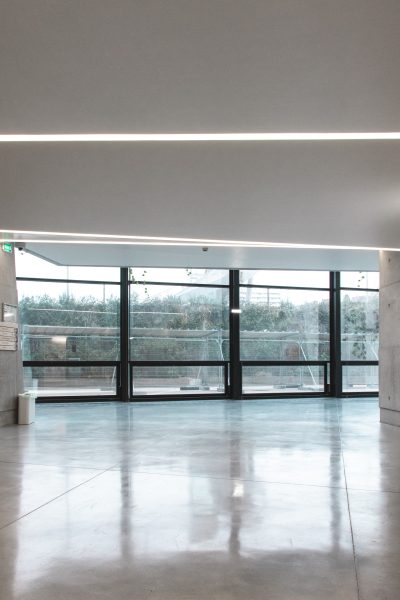Introduction
Polished concrete has become increasingly popular in recent years and for good reason. This versatile material can be used in a wide variety of settings, from commercial spaces to residential homes. In this article, we will explore the uses of polished concrete and why it is a popular choice for many applications.

I. What is Polished Concrete?
Before we dive into the uses of polished concrete, let’s first define what it is. Polished concrete is a type of concrete that has been treated with a chemical densifier and then ground down with progressively finer grinding tools. This process produces a smooth and glossy surface that is both durable and attractive.
II. Commercial and Retail Spaces
One of the most common uses of polished concrete is in commercial and retail spaces. It is a popular choice for flooring in places like restaurants, hotels, and shopping centers. The polished surface is not only visually appealing, but it is also easy to clean and maintain. Additionally, it can withstand heavy foot traffic, making it a durable and practical choice.
III. Residential Homes
Polished concrete is also a great choice for residential homes. It can be used for flooring in living spaces, basements, and even outdoor patios. The smooth and glossy surface can add a sleek and modern touch to any home decor. Polished concrete is also easy to clean and maintain, making it a practical choice for families with children and pets.
IV. Showroom Floors
Another popular use of polished concrete is in showroom floors. Car dealerships, for example, often use polished concrete in their showrooms to highlight their vehicles. The reflective surface of polished concrete can enhance the appearance of any product, making it an excellent choice for showcasing merchandise.
V. Industrial Spaces
Well, polished concrete supplies are also a great choice for industrial spaces. The smooth and durable surface can withstand heavy machinery and equipment, making it a practical choice for factories and warehouses. Additionally, the reflective surface can help improve lighting in these spaces, making them brighter and more inviting.
VI. Decorative Elements
In addition to its practical uses, polished concrete can also be used for decorative elements. It can be stamped or stained to mimic the appearance of other materials like marble or granite. Polished concrete can also be etched or engraved to create intricate designs and patterns. These decorative elements can add a unique and personalized touch to any space.
VII. Cost-Effective
Finally, one of the biggest advantages of polished concrete is its cost-effectiveness. Unlike other materials like marble or granite, polished concrete is relatively inexpensive. It is also easy to install and maintain, which can save you money in the long run. Additionally, the reflective surface of polished concrete can help improve lighting in a space, potentially reducing your energy costs.
Conclusion
In conclusion, polished concrete has a wide range of uses, from commercial and retail spaces to residential homes and industrial facilities. Its smooth and glossy surface is not only visually appealing, but it is also durable and practical. Additionally, it can be used for decorative elements and is cost-effective compared to other materials. Polished concrete is a versatile material that can be used in a variety of applications, both functional and aesthetic. Its durability, low maintenance requirements, and customizable appearance make it a popular choice for a wide range of settings, from commercial and industrial spaces to homes and outdoor areas. Additionally, the eco-friendly nature of polished concrete and its ability to reflect light make it an attractive option for sustainable and energy-efficient building designs.

